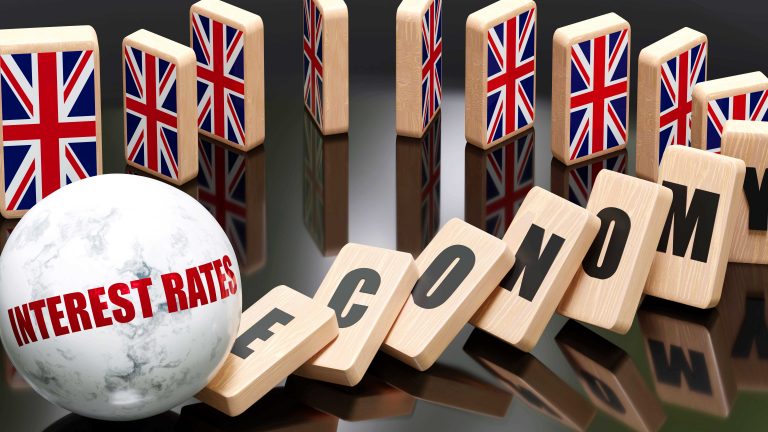
It is fair to say that the latest base interest rate increase came as something of a surprise to market participants. The Bank of England Monetary Policy Committee raised the Base Rate by 0.50% to 5% last week, a much more significant hike than expected. For some time, we have voiced our concern at the speed of central bank tightening in an attempt to combat inflation. Following the latest move, and language used by Bank Governor, Andrew Bailey, we are becoming increasingly worried that the central bank’s actions are likely to heap more pain on the UK economy. This only reinforces the importance of global investing and the need to carefully consider how investment portfolios are positioned.
The Bank of England has come under fire from politicians over recent weeks, who have accused the Bank of using outdated models as a tool by which to set monetary policy. A cross-party group of MPs have called for an overhaul of forecasting methods, and the Bank itself has launched an external review of processes used to forecast market conditions.
To be frank, the Bank’s track record has been poor over the last year, which calls into question the decision taken to raise Base Rates by 0.50% last week, with the suggestion of even higher rates to follow. In November 2022, Andrew Bailey predicted that the UK economy would face the longest recession since records began, with no growth being registered during 2023 and the first half of 2024. Unemployment was also predicted to rise to 6.5% at the time. Fast forward six months, and Bailey made an abrupt about turn, and forecast that the UK would not enter recession during 2023. Indeed, GDP growth projections were increased for both 2024 and 2025, in the “biggest ever upgrade” to published data.
The Bank has also badly mis-judged the speed at which inflation is falling. In February, the forecast year-end inflation rate was 3.9%, and Bailey explained to the Treasury Select Committee that “there are powerful downward forces on inflation now, and I think we have turned the corner”; however, this prediction was short-lived, and the year-end inflation rate was revised to 5.2% in May, just three months later.
Given the bank’s recent track record, we are again concerned that the Bank’s forecasting is inaccurate and have raised rates too far in a bid to re-assert its’ credibility in terms of financial forecasting.
It is apparent that the Bank of England were far too slow in curtailing the extraordinary support put in place during the Covid-19 pandemic. It is worth reflecting that just 19 months ago, the Base Rate stood at 0.1% and the Bank of England were printing money at a rate of £20 billion a month through Quantitative Easing. At this point, the first signal that inflation was rising was evident in data published at the time, and in the Bank’s own forecast in November 2021, inflation was expected to peak at 5% in April 2022 before falling back.
When the Russian invasion of Ukraine caused energy and food prices to surge, the Bank should have raised rates more aggressively and got “ahead of the curve” in economic speak. Shutting the stable door after the horse has bolted is unlikely to achieve the desired result, and we feel that the further rate hike announced last week are simply not warranted and could potentially lead to a situation where the Bank is forced into yet another embarrassing turnaround. This view is reinforced by the poor forecasting track record seen over recent months.
We feel the Bank should focus on the time lag between policy actions and the impact these have on the economy. This is known as Response Lag, and economists believe that it can take as much as 18 months for a change in interest rates to achieve the desired outcome. Whilst the Bank assert that the increase last week was necessary to bring inflation back to the target rate of 2%, the policy decision could put the UK economy into stall speed. This could result in inflation falling below the target and force the Bank to quickly unwind the rate hikes over recent months to avoid the UK falling deeper into recession. The UK housing market, under some stress at the current time, is likely to be a key indicator, given the impact falling house prices can have on consumer confidence.
Initial market reaction to the hike in UK Base Rates has been muted. There has been little impact on Bond markets, as UK Government Bonds have already priced in further hikes to come. After an initial spike immediately after the vote announcement, Sterling has also given back some ground against the Dollar. This is, perhaps, an indication that currency traders feel the Bank is losing its’ credibility in fighting inflation.
The likely impact of the unwarranted hikes in the Base Rate serves as a timely reminder that investors should take a global approach to investing. Whilst inflation remains sticky in the UK, inflation is falling at a faster pace in Europe and the US. Japan’s inflation rate is just over 3%, which is the highest level seen in Japan this century and a welcome change from the deflationary conditions of the last 20 years.
Diversification across a range of assets remains a key component of any successful portfolio strategy, and in periods when cash returns look appealing, it is worth reflecting on the strong performance seen from Equities markets over the first half of the year, and the prospect that Equities can provide both capital appreciation and income through dividends. There are attractive opportunities in global Bond markets, too.
Speak to one of our experienced financial planners here if you would like to discuss how your portfolio is positioned.